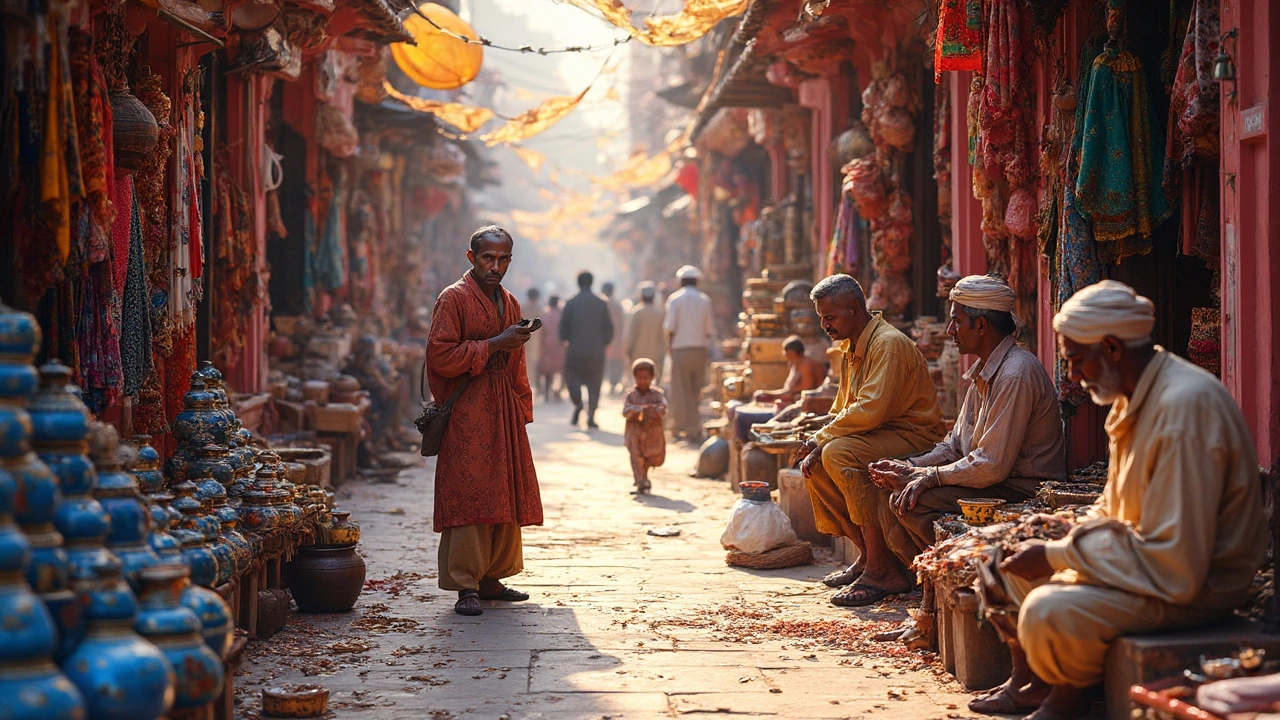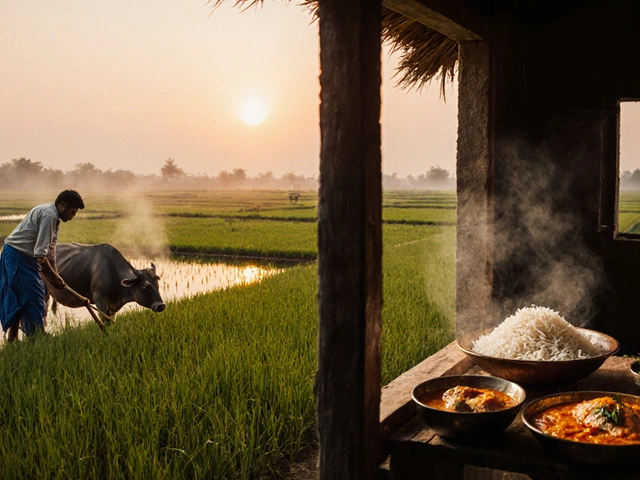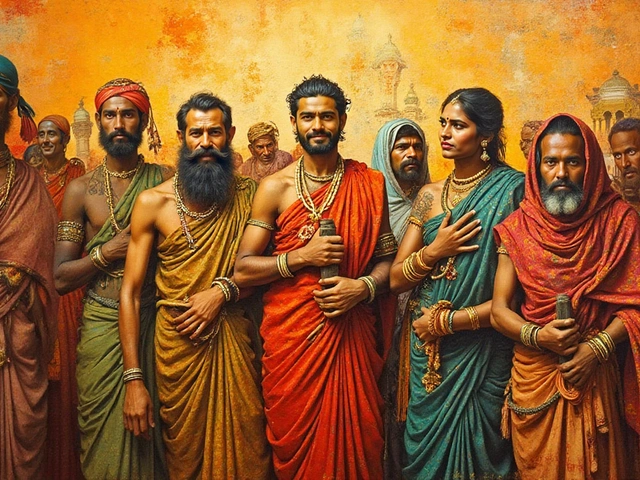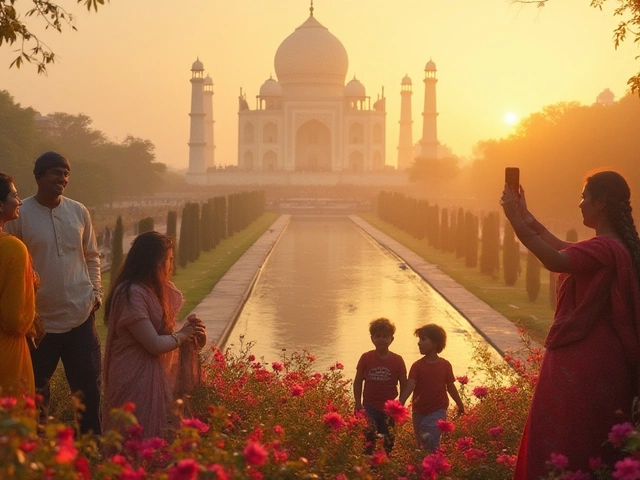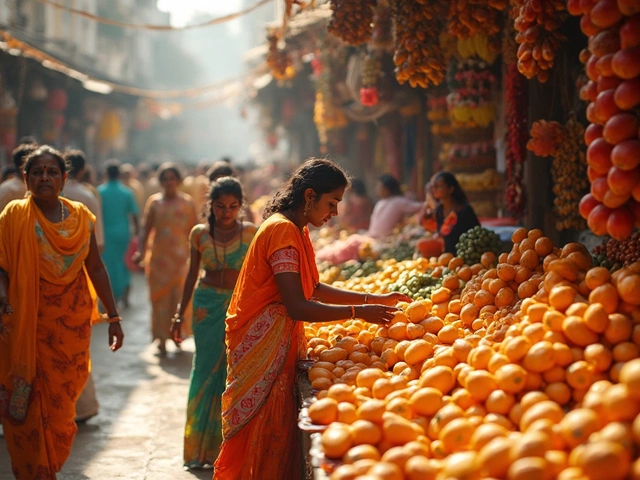Trying to find India’s true ‘craft city’? The answer is clearer than you might think—Jaipur. The Pink City isn’t just all about forts and palaces; it’s buzzing with creativity on every corner. This place has more crafts packed into its markets than most cities see in a lifetime.
Jaipur holds UNESCO's ‘Creative City of Crafts and Folk Art’ tag, which isn’t just a title—it’s everything here. Walk through Johari Bazaar or Tripolia and you’ll see dozens of crafts, from blue pottery to block-printed textiles. Artisans line the streets, some working with the same methods their families used 200 years ago. The vibe is hands-on and real, no assembly lines or copycats—just pure skill and passion.
So if you're hunting for something handmade, authentic, and soaked in tradition, Jaipur is the go-to spot. This isn’t a city stuck in the past, though—it's where old skills still pay the bills, and new trends grow out of ancient roots. You’ll leave with more than souvenirs; you’ll get stories, tips, and a real sense of what Indian crafts are all about.
- Why Jaipur Is Known as the Craft City
- Signature Handicrafts You Can’t Miss
- Meet the Masters: Jaipur’s Skilled Artisans
- Tips for Buying Authentic Handicrafts
- Exploring Craft Hubs and Hidden Corners
Why Jaipur Is Known as the Craft City
No other place in India wears the title of craft city of India quite like Jaipur. The city’s streets and markets are full of skilled artisans, some whose craft lineage goes back nine or ten generations. Jaipur’s craft reputation isn’t just hype either. In 2015, UNESCO officially named Jaipur a ‘Creative City of Crafts and Folk Art.' That put it on the global map for anyone interested in Indian handicrafts.
One big reason Jaipur stands out: the range of crafts you’ll find here. There’s blue pottery, bandhani tie-dye, block printing, meenakari jewelry, marble carving, leatherwork, and more. Each of these crafts has its own neighborhood or market in the city; you don’t get that kind of dedicated energy in most places.
Check out these quick numbers to get a sense of the action:
| Craft | Number of Workshops (Approx.) | Main Hub in Jaipur |
|---|---|---|
| Block Printing | 1,200+ | Sanganer, Bagru |
| Jaipuri Jewelry | 2,000+ | Johari Bazaar |
| Blue Pottery | 150+ | Kishanpole Bazaar |
Jaipur’s reputation didn’t happen overnight. Way back in the 18th century, the city’s rulers brought in master craftsmen from different parts of India and even Persia, hoping to turn Jaipur into a center for top-quality crafts. Over time, these skills blended and evolved, and now you see that rich mix in the variety available today.
The best part? Locals and tourists both shop for Jaipur crafts. Items range from everyday use to high-end collectibles. If you’re looking for proof that Jaipur is the heart of Indian handicrafts, just try walking through one of its markets—hardly anyone leaves empty-handed.
Signature Handicrafts You Can’t Miss
If you’re wandering through the craft city of India, Jaipur, there are a few handicrafts that you’ll spot everywhere—and you seriously shouldn’t skip them. Each one tells a clear story of where it came from and how people here work their magic.
Blue Pottery is everywhere. This stuff stands out with its bright blues, turquoises, and unique floral patterns. Unlike most Indian pottery, blue pottery is fired at a low temperature and is totally quartz-based, meaning it’s both pretty and delicate. Shops offer everything from plates and vases to soap dishes—most under ₹500 if you’re good at bargaining.
Block-Printed Textiles are big in Jaipur. Sanganeri and Bagru prints lead the pack, and you’ll see artisans stamping colorful wooden blocks onto cotton fabric with insane precision. If you want authentic wear or bedsheets, this is your best bet. Ask for handprints—not digital versions. A simple trick: the backside of genuine hand block-prints looks nearly as sharp as the front.
Jaipur Jewellery deserves a spotlight. The city is famous for its traditional Kundan and Meenakari work. These styles use uncut stones, gold foil, and colored enameling. Johari Bazaar is ground zero for silver, gold, and gemstone lovers.
Leather Jutis are those colorful, pointy-toed, hand-stitched shoes you’ll see everywhere. They’re made from camel leather and decked out with embroidery or colored beads. They’re comfortable and last years with basic care.
Lac Bangles—Jaipur has whole alleys just full of sparkling, hand-painted lac bangles. The Govind Dev Ji temple area is famous for these. Each set costs between ₹50 to ₹300, and they come in blingy designs you won’t find anywhere else.
Here’s a quick look at some must-buy Jaipur handicrafts, what makes them special, and where to find them:
| Handicraft | Main Area/Market | Notable Feature |
|---|---|---|
| Blue Pottery | Tilak Nagar | Vibrant color, distinctive glaze |
| Block-Printed Textiles | Bapu Bazaar, Sanganer | Hand-stamped prints |
| Kundan Jewellery | Johari Bazaar | Uncut stones, gold foil work |
| Lac Bangles | Maniharon Ka Rasta | Hand-crafted, flashy designs |
| Leather Jutis | Nehru Bazaar | Colorful, durable, traditional |
Don’t just browse—ask questions and talk to the sellers. Most of them know the backstory of each piece and can even show you a work-in-progress if you’re curious. That way, you step out with something handmade and a cool story to tell back home.
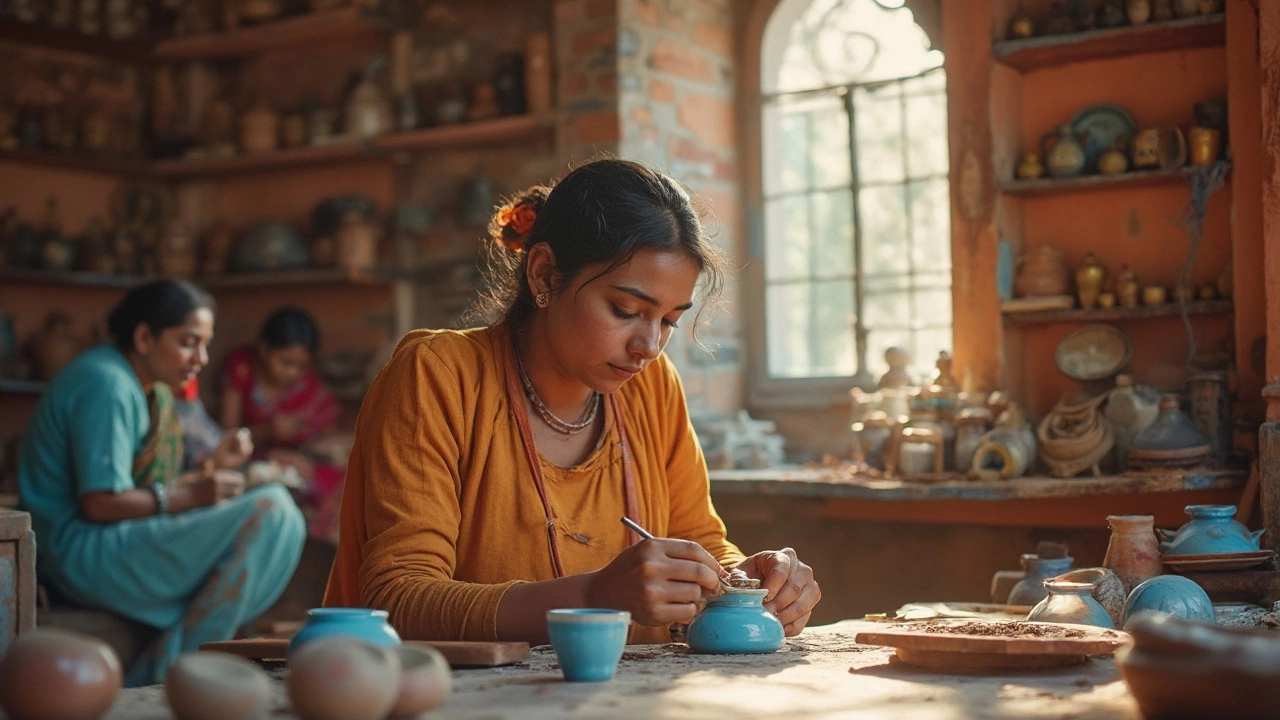
Meet the Masters: Jaipur’s Skilled Artisans
Jaipur’s handicraft scene is nothing without its artisans. Families here have been crafting Indian handicrafts for generations. Many streets are almost like open workshops—if you walk through Nahargarh or Amer Road, you’ll see block printers, miniature painters, and metal workers hustling out in the open.
You might’ve heard of the Kachhwaha clan. These guys are famous for their miniature painting skills, passed down for centuries. Then there’s the Leheriyadyers, who are pros at creating those bold, wavy tie-dye saris using simple tools—a process almost unchanged over hundreds of years.
The blue pottery makers really deserve a shoutout. Jaipur's blue pottery has Persian roots, but artisans here have given it a modern twist. You’ll find workshops like Neerja International, where artists blend natural colors with old firing techniques to create those iconic blue and white pieces. Most of the process, even molding and painting, is done by hand—no machine shortcuts.
Gemstone cutting is another huge deal. Jaipur is often called the ‘Gem City’ of India, and for good reason. Around 80% of India’s precious and semi-precious stones come through the city. Artisans here use tiny hand tools to cut and polish gems for the jewelry you see in every market stall and big brand alike.
Curious about what’s made and how it’s done? Here’s a quick peek at the crafts and who usually does them:
- Blue Pottery: Made by master potters in Sanganer and Neerja’s workshop
- Block Printing: Chhipa families hand-carving wooden blocks and printing in Bagru
- Jewelry: The Johari Bazaar goldsmiths handling intricate Kundan and Meenakari work
- Miniature Paintings: Workshops run by the Kachhwahas and their apprentices
- Textile Dyeing (Leheriya & Bandhani): Dyers in the old city and suburban lanes
Many Jaipur artisans aren’t just workers—they’re celebrity crafters in their field. For example, Ram Kishore Chhipa, a Padma Shri awardee, is legendary for his block prints. His technique turns simple cloth into art, and he teaches the next generation too. The city has over 2,000 officially recognized craft clusters, according to the Rajasthan government, so the skill pool is deep and hard to miss.
Whenever you buy Jaipur crafts, look for signs that the item is hand-made—small imperfections, the artist’s signature, or even photos of the craftsman in action at the shop. Don’t be shy to ask which family or artisan group made the item. Locals are proud of their work and love to share their stories.
Tips for Buying Authentic Handicrafts
If you’re serious about getting the real deal in Indian handicrafts from Jaipur, you’ll want a game plan. Here’s what you need to know to avoid fakes and make every rupee count.
- Check for Certification: Genuine pieces often come with a GI (Geographical Indication) tag—especially on blue pottery, Jaipur quilts, and Kundan jewelry. This little label guarantees that what you’re buying is made locally, not mass-produced somewhere else.
- Ask How It’s Made: Artisans love talking about their work. Ask them about their technique or the history behind the design. If they hesitate or have no details—huge red flag.
- Look at the Details: Handmade block prints, for example, will almost always have tiny imperfections that prove they’re not machine-made. Mass-produced items tend to look too uniform or perfect.
- Bargain, But Respectfully: Bargaining is normal, but remember, skilled artisans aren’t selling factory knockoffs. Start your offer around 60-70% of the quoted price and meet in the middle. Never lowball disrespectfully—nobody wants to be that tourist.
- Visit Government-Run Shops: In Jaipur, look out for outlets like Rajasthan Handloom or Rajasthali. These shops only sell verified handicrafts and prices are fixed, saving you from overpaying or picking up fakes.
| Handicraft | Authenticity Check |
|---|---|
| Jaipur Blue Pottery | Check for slight glaze cracks and muted blue tones, not garish colors |
| Block Printed Textiles | Look for irregularities in patterns and color seepage |
| Kundan Jewelry | Stones set with laakh (a natural resin), should feel a bit heavy |
Last tip: Avoid buying from shops where you feel rushed or pressured. Real Jaipur crafts are about the story as much as the product, so the process should feel relaxed. If a deal sounds too good to be true, it probably is. Go slow, ask questions, and enjoy the search for that perfect handmade find.
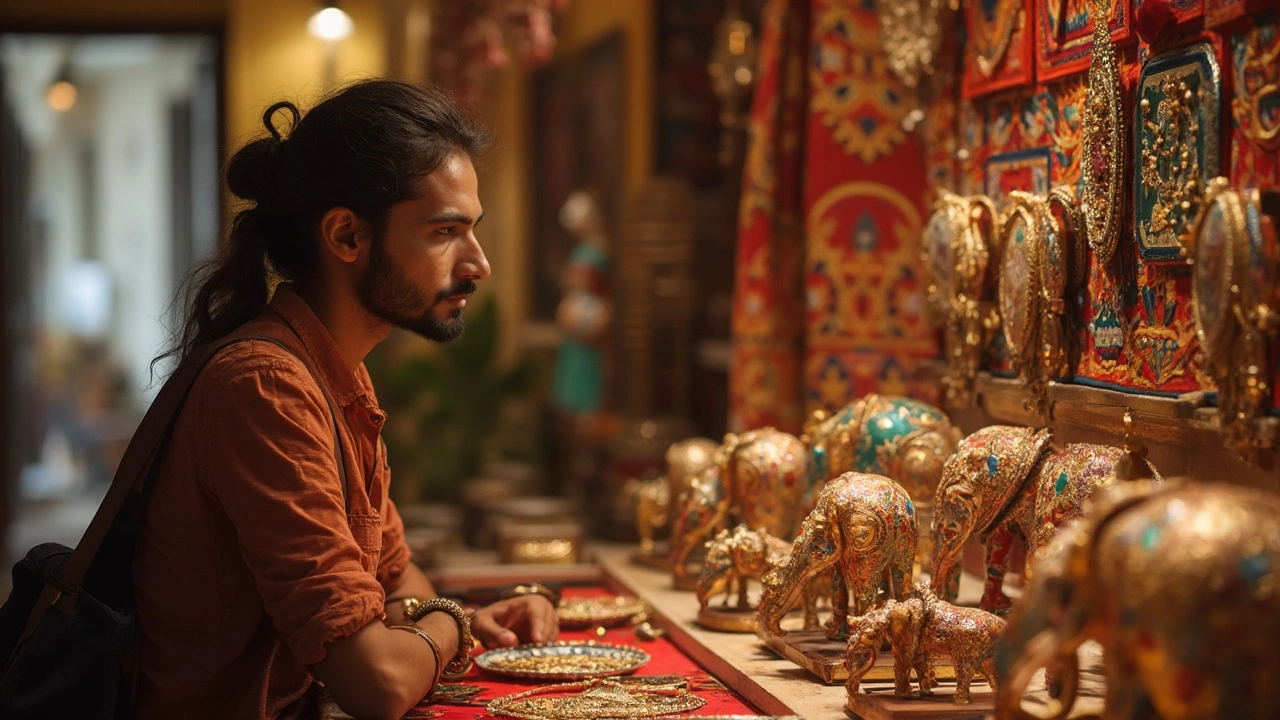
Exploring Craft Hubs and Hidden Corners
If you're serious about discovering why Jaipur is called the craft city of India, you're going to want to see the real action, not just polished souvenir shops. The heartbeat of Jaipur's crafts lives in its age-old markets and tucked-away artisan colonies.
The city's main craft hubs include:
- Bapu Bazaar – This is ground zero for block-printed textiles, mojaris (traditional shoes), and quilts. The shops here are often run by the same families for generations.
- Johari Bazaar – Don’t let its jewelry reputation fool you. Walk a bit deeper and you’ll spot enamel (meenakari) craftsmen and lac bangle makers working right in their small shops.
- Tripolia Bazaar – Here you get to talk to brass workers and see marble inlay craftsmen up close. They’ll even show you how they do those intricate floral patterns on-site.
- Chandpole Bazaar – This is your spot for marble statues, handcrafted wooden items, and the city’s famous blue pottery. Chandpole’s little alleys can keep you busy for hours.
If you want to skip the tourist crowd, look into the Kishanpole area. This part of Jaipur is basically an open-air workshop, especially for woodcarvers and tie-dye artists. Ask a local for directions to a "kachhi basti" (artisan cluster) where you’ll find entire families working together, often right at home.
Still not enough? You can also join a hands-on craft tour. Several local groups organize half-day walks where you get to try block printing or pottery yourself. It’s not just for show—these tours support local craftsmen directly and let you see how much skill goes into each piece.
| Market | Main Crafts | Best Time to Visit |
|---|---|---|
| Bapu Bazaar | Block prints, Mojaris | Afternoon |
| Johari Bazaar | Meenakari, Lac bangles | Late Morning |
| Tripolia Bazaar | Brass, Marble inlay | Morning |
| Chandpole Bazaar | Blue pottery, Woodwork | Evening |
Tip: Always ask shopkeepers for a quick demo—they’re usually happy to show off their process. And if you see a narrow alley lined with small workshops, don’t be shy about exploring. That’s where you’ll find some of the best bargains and the real deal in Indian handicrafts.
